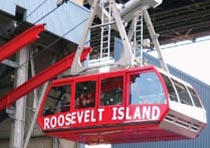Tuesday, February 4, 2025 – WONDERFUL ANIMAL SCULPTURES ON CENTRAL PARK GATE


HOW THESE FAIRY-TALE GATES IN
CENTRAL PARK
CONNECT TO AN 1860’S
HOSPITAL
FOR THE “RUPTURED AND
CRIPPLED”
Tuesday, February 3, 2025
ISSUE #1387
EPHEMERAL NEW YORK
Walk up Fifth Avenue to about East 85th Street, and something enchanting will catch your eye. Just inside Central Park are two granite pillars flanking cast-iron gates decorated with animal sculptures.

Bears, deer, mice, squirrels, a frog, a fox, a wold, a crane, and a crow—these playful sculptures set against a backdrop of tree branches are inspired by the stories in Aesop’s Fables.
It’s an appropriate theme, as the gates open to the Ancient Playground, one of the Central Park’s 21 play areas for kids.
But the pillars have a curious inscription. One carries a dedication to the memory of a William Church Osborn, while the other pillar calls out his accomplishments: president of the Metropolitan Museum of Art from 1941 to 1947; president of the Children’s Aid Society from 1901 to 1949.

The pillar also notes that from 1910 and 1957 he was president of a group called the New York Society for the Relief of the Ruptured and Crippled.
The ruptured and crippled? Like institution and lunatic asylum, these Dickens-ish terms have been long abandoned by the medical establishment. But it made me wonder about the Society and to try to trace its origins.
That took me back to the New York City of 1863. With the Civil War in the backdrop, the newly formed Society founded a hospital led by an orthopedic surgeon, Dr. James Knight, in Knight’s own home on Second Avenue and Sixth Street.

In a city population of about 800,000, many people suffered from orthopedic problems and “ruptured” organs. That first year, more than 800 people sought help, including many children.
“Persons afflicted with ruptures, ulcerated legs [and] poor families having crippled children, suffering from spinal and paralytic affections, thronged our streets, dwellings and places of business, making revolting displays of their infirmities and misfortunes,” wrote Dr. Knight, according to this NYC Mayor’s Office page.

By 1875, the Society raised enough funds to open a much larger hospital on 42nd Street and Lexington Avenue, below. (Above, the third image shows the play area for children living at the hospital.)
William Church Osborn, a lawyer and philanthropist from a wealthy New York family, got involved with the Hospital for the Ruptured and Crippled around this time.
Under his leadership, he helped negotiate the selling of the second hospital and the 1912 construction of a new, more modern facility on East 42nd Street and Second Avenue.

In 1940, the hospital was renamed the Hospital for Special Surgery, which exists today on 70th Street east of York Avenue.
So what’s the connection between Osborn and the animal gates?
After Osborn’s death in 1951 at age 88, city officials decided to honor his long history of supporting children’s causes by commissioning the gates, which would grace a new playground to be built north of the Museum this avid art collector once led.

In 1953, the “Osborne Gates” were dedicated. They are the work of 20th century sculptor Paul Manship, whose animal and mythological figures in bronze can be found throughout Central Park.
In the 1970s, the gates were relocated to the Ancient Playground; the previous playground was demolished to make room for an expanded Met museum building

The kids scampering around the playground these days may not be able to read Osborn’s name inscribed in the pillar. But they meet eye to eye with the animals on the gates—which I imagine would charm the man they’re named for.
COMING TO THE NYPL BRANCH ON
FEBRUARY 18TH

CREDITS
EPHEMERAL NEW YORK
All image are copyrighted (c) Roosevelt Island Historical Society unless otherwise indicated
THIS PUBLICATION FUNDED BY DISCRETIONARY FUNDS FROM CITY COUNCIL MEMBER JULIE MENIN & ROOSEVELT ISLAND OPERATING CORPORATION PUBLIC PURPOSE FUNDS.


Copyright © 2024 Roosevelt Island Historical Society, All rights reserved.Our mailing address is:
rooseveltislandhistory@gmail.com

Leave a comment